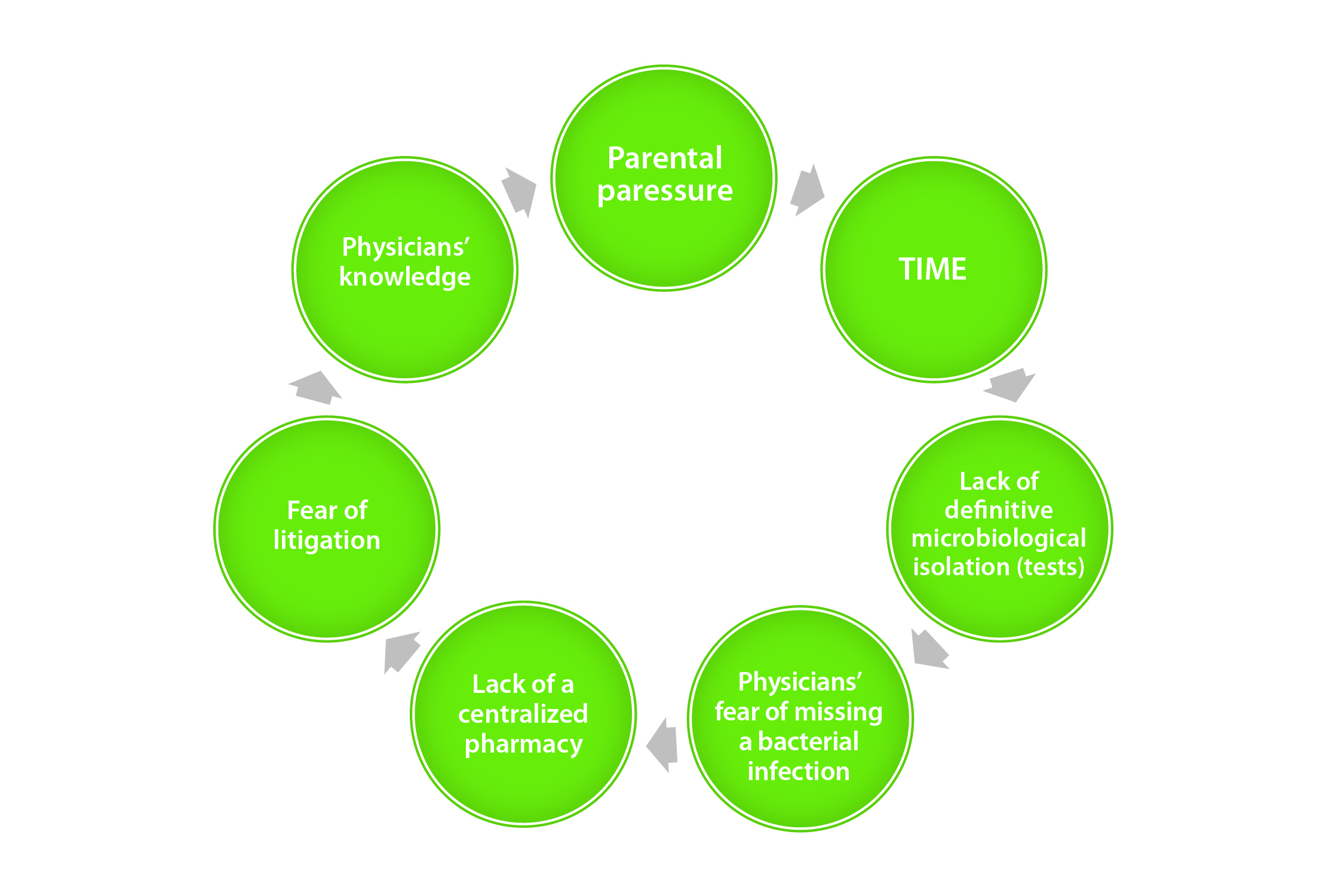Stewardship in the pediatrician’s office: It’s about time to get antibiotic smart


In this new bimonthly column, pediatric infectious disease specialists Asif Noor, MD, FAAP, and Ulka Kothari, MD, share valuable insight on antimicrobial stewardship in pediatric outpatient settings and explain why it is important for your practice. Antimicrobial stewardship programs, or ASPs, have become a crucial intervention to spare patients and facilities from the burden of antibiotic-resistant pathogens, which are responsible for one death every 15 minutes, according to updated estimates from the CDC.
Antibiotics treat common childhood infections such as streptococcal pharyngitis and otitis media. Additionally, antibiotics treat serious infections such as sepsis. However, 30% of the antibiotics prescribed in an outpatient setting are inappropriate, according to the CDC. This issue not only predisposes children to the risk for detrimental side effects (allergic reactions, Clostridioides difficle infection, etc.), but it is also is responsible for an inimical rise in antibiotic resistance in our communities.
As pediatricians, we prescribe antibiotics almost daily. Antibiotics, when used appropriately for bacterial infections, may decrease infection days and allow the early return of children to school and parents to work. Antibiotics save lives. Indeed, without antibiotics, modern specialized pediatric care in terms of intensive care, cancer care, surgery and transplantation surgery would not have been possible. On the other hand, the threat of antibiotic resistance is real. The discoverer of the first antibiotic, penicillin, Sir Alexander Fleming said in a New York Times article published June 26, 1945, “the microbes are educated to resist penicillin and a host of penicillin-fast organisms is bred out. . . In such cases the thoughtless person playing with penicillin is morally responsible for the death of the man who finally succumbs to infection with the penicillin-resistant organism. I hope this evil can be averted.”
On Sept. 18, 2014, President Barack Obama issued an executive order to improve antibiotic stewardship and encourage regulations on antibiotic prescription. A rapid upsurge in antimicrobial stewardship efforts is clearly visible in the form of robust hospital-based programs over the past decade. However, most antibiotic use is in the outpatient setting, and a quarter of these prescriptions are regarded as inappropriate. It’s about time to get antibiotic smart in our offices!
In this bimonthly column, we will discuss common barriers to appropriate antibiotic prescription in the office. We will describe resources for pediatricians, such as national guidelines; delineate quality improvement strategies; and discuss the potential role of electronic health records in implementing, supporting and monitoring stewardship efforts.
In subsequent columns, we will approach clinical syndromes, keeping in view the seasonality of infections. Each article will have three sections:
- Confronting the conundrum of antibiotic prescription in a particular infection.
- Sharing resources for the pediatricians in the form of evidence-based, best-practice guidelines.
- Discussing the utility of quality improvement strategies and EHRs.
1. Confronting the conundrum of appropriate antibiotic prescription:

2. Practice guidelines for outpatient settings:
Let’s begin with a definition. In a consensus statement published by the Infectious Diseases Society of America, the Society for Healthcare Epidemiology of America and the Pediatric Infectious Diseases Society, antimicrobial stewardship programs are defined as “coordinated interventions designed to improve and measure the appropriate use of antimicrobial agents by promoting the selection of the optimal antimicrobial drug regimen, including dosing, duration and route of therapy.”
In the hospital setting, antimicrobial supply is led by pharmacy-centric programs. Lack of a centralized pharmacy in most outpatient settings takes the pharmacist out of the equation. We, the pediatricians, must serve as the main intervention to improve antimicrobial use in the office setting. The CDC’s core elements of outpatient antimicrobial stewardship provide a framework for outpatient clinicians and facilities. These include commitment, action for policy and practice, tracking and reporting, and education and expertise.
3. Operationalizing an ASP in your office through quality improvement and EHRs:
The initial steps are identifying and quantifying ASP opportunities in one’s office setting, understanding current practices and prioritizing improvement efforts for maximum impact. We can provide practical solutions to operationalize an ASP in the office setting — including the use of sound quality improvement methods tailored to the ASP, designing a team-based approach and conducting rapid improvement cycles while making it easy for office staff and providers to do the right thing. We will discuss how EHRs can be optimized to support processes and workflows, supplement clinical decision-making, data gathering and monitoring outcomes, patient education and patient communication.
Including patients and families as partners in shared decision-making is another key to successful execution of the ASP. Included in each issue will be practical tips to involve and educate patients and families. Pediatricians in busy practices often cite lack of time and resources (for both themselves and families) as a barrier to prescribing appropriate antibiotics. Potential solutions to overcome these barriers, including sharing success stories, will be included in each issue.
Many pay-for-performance metrics are based on appropriate use of antibiotics. These will be highlighted with relevant topics as well.
References:
CDC. The core elements of outpatient antibiotic stewardship. https://www.cdc.gov/antibiotic-use/community/pdfs/16_268900-A_CoreElementsOutpatient_508.pdf. Accessed November 19, 2019.
Fishman N, et al. Infect Control Hosp Epidemiol. 2012;doi:10.1086/665010.
Pew. Antibiotic use in outpatient settings. Health experts create national targets to reduce unnecessary antibiotic prescriptions. https://www.pewtrusts.org/-/media/assets/2016/05/antibioticuseinoutpatientsettings.pdf. Accessed November 19, 2019.
Penicillin’s finder assays its future. New York Times. https://www.nytimes.com/1945/06/26/archives/penicillins-finder-assays-its-future-sir-alexander-fleming-says.html. Accessed November 19, 2019.
Disclosures: Kothari and Noor report no relevant financial disclosures.
